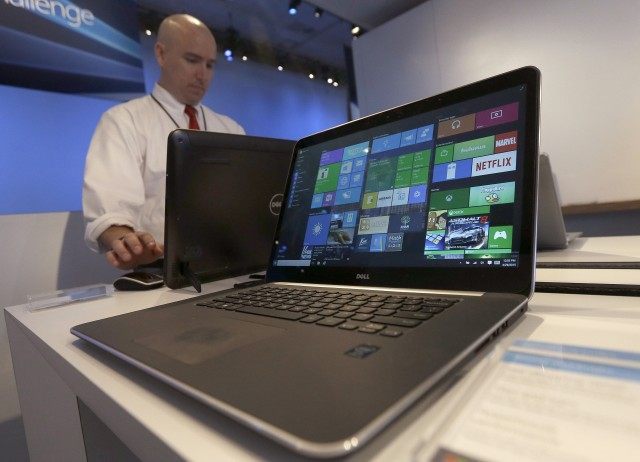For a company that is regularly scowled at by the tech media, Microsoft’s introduction of Windows 10 over the last 48 hours has been amazingly smooth, and reviews are overwhelmingly positive.
In what for Microsoft is a paradigm shift, the once rigidly top-down tech giant put the beta version of the Windows 10 platform in the hands of 5 million customers over the last 9 months to allow “crowd-sourced” debugging of the product.
Vanity Fair published “Microftsoft’s Lost Decade” in 2012 to describe how the once-most-dominant and wealthy tech firm on earth had fallen flat since 2000 in “every arena it entered: e-books, music, search, social networking, etc.” Three years later, the Windows Phone and Windows 8 disasters could be added to a string of spectacularly expensive corporate failures that allowed Apple, Google, and Facebook to sprint past Microsoft.
Just 17 months after CEO Steve Ballmer was dumped, a new Windows leadership team under CEO Satya Nadella and Executive Vice President Terry Myerson has launched what it says will be the final iteration of the Windows operating system. From now on, Windows 10 will be updated like a “service”–continuously, and in perpetuity.
Under fire three years ago from tablets, like the iPad, that looked like they might be a serious threat to the Windows Empire, Ballmer promised that Microsoft would converge computing around the cloud and “three screens–the PC, the smartphone, and the television.” Although he had a forward-looking concept, Ballmer arrogantly demanded that Windows users forget their old point-and-click ways and embrace a tiled future in Windows 8.
That strategy flopped, as users rejected the confusing new version of Windows, causing developers to balk. The iPad didn’t kill off laptops, but consumers still haven’t shown a big interest in touchscreen PCs. The version 8.1 fix came too late to stop the bleeding.
Although Microsoft sold over 200 million copies of Windows 8 and 8.1, the product’s OS market share for new operating systems never exceeded 20 percent from 2012 to 2015. Businesses refused to upgrade, causing Windows 7 market share actually to grow from 47 percent to 53 percent during the period. With no momentum in its flagship product, Apple’s iOS and Google’s Android flourished on mobile.
Microsoft’s new management team scrapped “Windows 9” to bet the company on a paradigm shift to Windows 10 as a core service applicable to servers, home computers, TVs and wearable Microsoft Bands. The goal of Windows 10 is to provide a platform that can live everywhere and be anything.
In an admission of how foolish Ballmer’s relentless plunge into the Windows Phone turned out to be, Microsoft took a $7.6 billion write-off on Nokia three weeks ago.
Ballmer’s “three screens” is dead, with Microsoft introducing Hololens for holographic 3D computing in February. Capitalizing on the company’s “Kinect” motion-sensing input devices pioneered for Xbox 360 and Xbox One gaming, the product allows business users to work and design in a virtual 3D space. In July, NASA started using Hololens to control its “rover vehicles” that move around on Mars and the Moon.
Windows 10 can also run on “Internet of Things” (IoT), which are devices that do not have formal displays with traditional graphical user interfaces.
The Windows 10 desktop, complete with taskbar, will look familiar to anyone who’s owned a Windows PC in the last 20 years, but navigating around in Windows 10 is greatly improved. The annoying Windows 8 “hot corners” that made it difficult to access settings functions or even the “start screen” are gone. A new Action Center works as a notification center to collect alerts from apps and provide quick access to settings.
Multitasking is the star for Windows 10. With the much improved “Snap” feature, the user can drag any window to a screen edge to snap it to half of their screen; and then the operating system helpfully displays other windows in an array on the other half of the screen. For touchscreen uses, you can swipe from the left to bring up a list of all open apps and snap two of them alongside each other.
But perhaps the biggest feature of Windows 10 is the rumored launch of two high-end smartphone devices that will include a new “Continuum” from Windows 10. The disruptive feature will allow a user’s phones to act as kind of a PC that seamlessly connects to a keyboard, mouse, and monitor to use all the Windows 10 apps.
Microsoft had a 75 percent market share of all personal computing devices in 2007. But that omnipotence has plunged to about 18 percent, with its total absence from mobile tablets and smartphones. Perhaps that humiliation is why Microsoft was willing to listen seriously to its customers in developing Windows 10.
For tech writers like myself who have scowled at Microsoft for years, we may need to find a new company to hate.

COMMENTS
Please let us know if you're having issues with commenting.